Ghosts of the Past: Vernon Lee
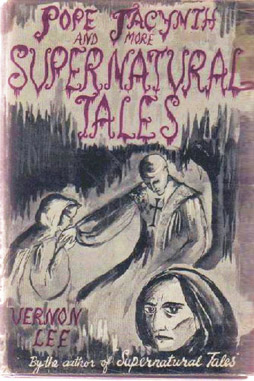 With Women in Horror Month having just wrapped up (and Women’s History Month having just started in many places), I thought I’d take a moment to write a few words about Violet Paget, a Victorian-era art critic and writer of ghost stories who published under the name Vernon Lee. I’ve not read her criticism, but I recently found a collection of her fiction and was tremendously impressed.
With Women in Horror Month having just wrapped up (and Women’s History Month having just started in many places), I thought I’d take a moment to write a few words about Violet Paget, a Victorian-era art critic and writer of ghost stories who published under the name Vernon Lee. I’ve not read her criticism, but I recently found a collection of her fiction and was tremendously impressed.
You can get an excellent overview of Paget’s life and works from this article by Brian Stableford. To summarize: Born in 1856 in France, she first published a story at the age of 13, and adopted her pseudonym — a nod to her poet half-brother Eugene Lee-Hamilton — in 1877. Her first book, Studies of the Eighteenth Century in Italy, appeared in 1880 alongside a collection of Tuscan fairy tales. Paget was living with Lee-Hamilton in Florence at this time; she never married, but her life was marked by intense emotional relationships with several women. Various ghost stories and tales followed through the 1880s and 90s, along with essays (primarily travel writing and pieces on medieval Italian art and architecture), plays, and non-supernatural novels. The stories largely ceased with the opening of the twentieth century, but she continued to produce essays and the occasional novel. She died in Italy in 1935.
A passionate traveller who was called “the cleverest woman in Europe,” known for being energetic, argumentative, and a frequent wearer of men’s clothes, Paget was an Aesthete, although apparently not overly impressed by Oscar Wilde; Stableford quotes her as describing Wilde as “plain, heavy and dull, but agreeable.” Still, she published a story in The Yellow Book in 1895. She effectively established the word ‘empathy’ in English, specifically with reference to one’s reaction to art. Even in her fiction, her sensitivity to art comes through, as does her engagement with the past — with ruins and remnants, and specifically with the culture and inheritance of Italy. You can find much of her work online.
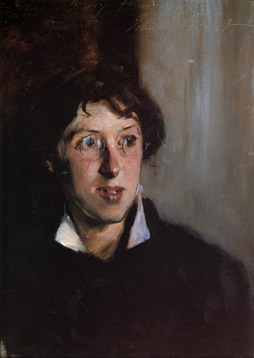 The book that I read was Pope Jacynth and More Supernatural Tales, a 1956 collection of her tales and an extended fragment of non-fiction with a ghost story embedded within it. Written mostly in the 1880s, they make for an interesting variety of styles. Still, though it’s cobbled together from pieces originally published in a number of different anthologies, there’s a surprising unity to the book. Images and themes recur: the past is constantly contrasted with the present, and indeed frequently seems to invade the present.
The book that I read was Pope Jacynth and More Supernatural Tales, a 1956 collection of her tales and an extended fragment of non-fiction with a ghost story embedded within it. Written mostly in the 1880s, they make for an interesting variety of styles. Still, though it’s cobbled together from pieces originally published in a number of different anthologies, there’s a surprising unity to the book. Images and themes recur: the past is constantly contrasted with the present, and indeed frequently seems to invade the present.
So “Pope Jacynth,” the title story not only of this collection but of 1904’s Pope Jacynth and Other Supernatural Tales, begins by reflecting that the titular Pope had built a basilica over the bones of two martyrs before unwinding backward to tell the story of a medieval man tempted by Satan. It’s an inverse of the story of Job (or perhaps of Faust), in which the main character’s given more and more worldly success in an attempt to ensnare his soul. Stylistically, it’s not dissimilar to the medieval fantasies of William Morris, that other great Aesthete. It has the same deliberate archaism in vocabulary and rhythm. And it has a similar attitude to the religion of the era: both sardonic and wondering at once, a mixture that comes out in the frequently-lush descriptive text. Consider:
And they took Pope Jacynth, once called Odo, and carried him to the palace, which is over against the Church of St Peter, and before which stands the pine cone of brass, made as a talisman by the Emperor Adrian. And they arrayed him in fine linen from Egypt, and silk from Byzantium, as befits a Pope; and his cope was of beaten gold, even gold beaten to the thinness of a leaf, wrought all over with the history of our Lord and His Apostles, with a border of lambs and lilies, a lamb and a lily all the way turn about. And his stole was likewise of gold, gold plates cunningly riveted, and it was set all round with precious stones, emeralds, and opals, and beryls and sardonyxes, and the stone called Melitta, all perfectly round and the size of a pigeon’s egg, and two goodly graven stones of the ancients, one showing a chariot-race and the other the effigy of the Emperor Galba, most cunningly cut in relief. And his mitre also was of riveted gold, and inside it was fastened the lance-head of Longinus, which touched the flesh of our Lord; and on the outside it was bordered with pearls, and in its midst was a sapphire the size of a swan’s egg worked marvellously into a cup, which was the cup that the Angel brought to our Lord.
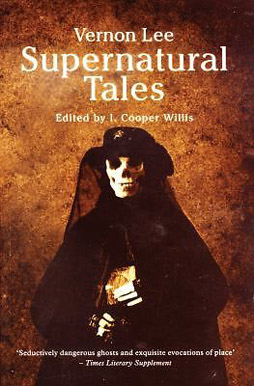 And that’s just half the paragraph. Lee doesn’t always use that density of description, but when she does the effect’s powerful, incantatory, clearly the product of a strong visual imagination and an equally-strong sensitivity to prose style. Occasionally, even her briefer descriptions attain a striking symbolic heft — not unlike the art of the Middle Ages or of the Renaissance, so highly charged with visual symbolism.
And that’s just half the paragraph. Lee doesn’t always use that density of description, but when she does the effect’s powerful, incantatory, clearly the product of a strong visual imagination and an equally-strong sensitivity to prose style. Occasionally, even her briefer descriptions attain a striking symbolic heft — not unlike the art of the Middle Ages or of the Renaissance, so highly charged with visual symbolism.
“The Lady and Death” is a story-in-a-story, in which a traveller in the Swiss town of Erlach is told a tale of a medieval saint, with two different interpretations proposed. One’s a Lutheran and relatively rationalistic take on the story, the other a Catholic. The point of the narrative seems to me to be the balance between the two, using the nineteenth-century interest in comparative mythology to keep two contradictory readings in balance.
“St. Eudæmon and his Orange Tree” is a tale of Dark Ages Rome, where three saints of contrasting attitudes encounter a manifestation of pagan power. It’s written in a lighter, more contemporary-to-Victorian-times style than “Pope Jacynth,” and superficially seems to have a brighter conclusion. But it’s perhaps more deeply concerned with the non-Christian past: “The old Pagan Rome was buried under ground, great boulders and groups of columns only protruding,” we are told, and that the old city had become “haunted of demons.” But the story’s about such a kind of haunting, somehow like the old architecture protruding above the ground of the present. By the end of the story, the demon’s put gently to rest; and yet it’s not by a harsh display of power, but a gentle remonstrance. The pagan past accepts Christianity, and comes to endure in a new form. A reader may well wonder whose power has overcome whose, and indeed if the whole question has meaning.
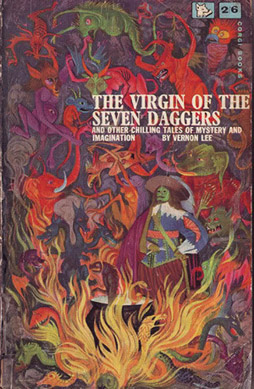 “Winthrop’s Adventure” is a longer story, and in many ways seems simpler. An artist reacts strangely to hearing a recently-discovered piece of music; asked about it, he tells a tale in which he is obsessed with an eighteenth-century portrait glimpsed in Lombardy. It’s another story-within-a-story; and another Italian story. In fact, it’s so much concerned with Italy that perhaps the strongest passages in the piece are descriptions of Italian country life and superstitions. The actual tale is relatively predictable, though it’s interesting to note that Paget here creates an interesting double-vision of the past — the story of the painter is set in the late 19th century, but he interacts with people and things that recall events from earlier in the 19th, only for the 18th-century influence of the painting to ultimately become most prominent. Time seems to open up through the story, so that the present becomes only a collection of pasts — which aren’t all past.
“Winthrop’s Adventure” is a longer story, and in many ways seems simpler. An artist reacts strangely to hearing a recently-discovered piece of music; asked about it, he tells a tale in which he is obsessed with an eighteenth-century portrait glimpsed in Lombardy. It’s another story-within-a-story; and another Italian story. In fact, it’s so much concerned with Italy that perhaps the strongest passages in the piece are descriptions of Italian country life and superstitions. The actual tale is relatively predictable, though it’s interesting to note that Paget here creates an interesting double-vision of the past — the story of the painter is set in the late 19th century, but he interacts with people and things that recall events from earlier in the 19th, only for the 18th-century influence of the painting to ultimately become most prominent. Time seems to open up through the story, so that the present becomes only a collection of pasts — which aren’t all past.
Again in “Dionea,” the pagan past of Italy becomes manifest in the present. It’s an epistolary story, told in the form of letters from an old man in a town in Liguria to a patron in England. After a storm, the villagers have found a little girl washed up on a nearby beach, apparently a victim of shipwreck. The Englishwoman to whom the old man writes sends money for her upkeep, but strange things begin to happen around her; people fall in love, but not necessarily appropriately, and nearby priests seem to have come under an incredible strain. And then a painter friend of the old man’s patron comes to the town, and things soon take a terrible turn.
“Dionea” is another long story, and it’s expertly told, as tension builds and recedes. Again a fragment of the Italian pagan past intrudes into the present, again there is the tension between paganism and Christianity (and again there is the careful attention paid to the mode by which the story’s told and the provenance of the narrator). But this time the whole thing has a feel not dissimilar to Arthur Machen. “Dionea,” published in 1886, precedes The Great God Pan by four years; it’s in many ways a simpler story, and much less horrific, but I feel there’s a tonal similarity in the way that pagan powers of fertility are imagined, as well as the figure of a female who seems to play with the emotions of those around her. Of course, this kind of interest in paganism was not uncommon at the time, but it certainly seems to lend itself to Paget’s themes. Her narrator, it turns out, is working on a book about pagan remains, and this passage, from his reflections on his work, seems to me to be central to Paget:
Certain it is that the Pagan divinities lasted much longer than we suspect, sometimes in their own nakedness, sometimes in the stolen garb of the Madonna or the saints. Who knows whether they do not exist to this day? And, indeed, is it possible they should not? For the awfulness of the deep woods, with their filtered green light, the creak of the swaying, solitary reeds, exists, and is Pan; and the blue, starry May night exists, the sough of the waves, the warm wind carrying the sweetness of the lemon-blossoms, the bitterness of the myrtle on our rocks, the distant chaunt of the boys cleaning out their nets, of the girls sickling the grass under the olives, Amor amor amor, and all this is the great goddess Venus. And opposite to me, as I write, between the branches of the ilexes, across the blue sea, streaked like a Ravenna mosaic with purple and green, shimmer the white houses and walls, the steeple and towers, an enchanted Fata Morgana city, of dim Porto Venere; … and I mumble to myself the verse of Catullus, but addressing a greater and more terrible goddess than he did:
“Procul a mea sit furor omnis, Hera, domo; alios; age incitatos, alios age rabidos.”
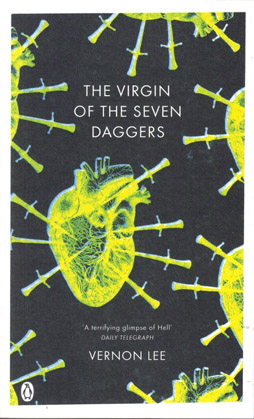 A translation I found online suggests that the Latin means “far from my house turn all your fury, let others / feel its transports, let others catch its frenzy.” The chant of amor has been made by Dionea earlier in the story.
A translation I found online suggests that the Latin means “far from my house turn all your fury, let others / feel its transports, let others catch its frenzy.” The chant of amor has been made by Dionea earlier in the story.
Following “Dionea” is “Ravenna and Her Ghosts,” a travel piece reflecting on Ravenna and ending with a legend about a clever young man wasted by his hopeless love for a coy maiden, who wins her with the unwitting help of some ghosts he finds in the nearby forest of Classis. As a whole, the piece is of course a showcase for Paget’s style and her sense of the history of Italy. But what really stands out is her sensitivity to the mystery of the past:
For [Ravenna] is, after all, a nest of ghosts. They hang about all those silent, damp churches; invisible, or at most tantalising one with a sudden gleam which may, after all, be only that of the mosaics, an uncertain outline which, when you near it, is after all only a pale grey column. But one feels their breathing all round. They are legion, but I do not know who they are. I only know that they are white, luminous, with gold embroideries to their robes, and wide, painted eyes, and that they are silent.
From this, Paget goes on to imagine one ghost in particular, that of Theodoric, the barbarian king who shows up in the Niebelungenlied and, as Dietrich of Bern, became the centre of a cycle of medieval legend. There’s the feel of real imaginative involvement in this prose, even of a kind of longing. The ghosts seem in some way to symbolise Paget’s own vision of vanished Ravenna, the almost mythic sense that quickened the actual city before her into a breeding-ground for unhostile spectres.
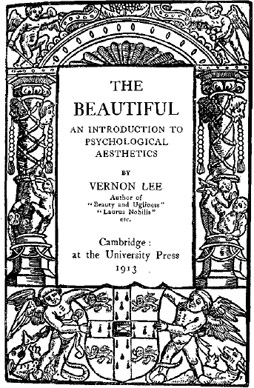 The last story of the book, the novella “Oke of Okehurst,” is the longest and perhaps most complex. It’s told by a painter, who recalls the strange events around his painting a portrait of a Kentish nobleman’s wife. The wife is obsessed with a family legend, concerning the murder of a 17th-century poet by a husband and wife who are ancestors of the current Okes of Okehurst. Both women were and are named Alice, and the current Alice has come to imagine herself as the reincarnation of her vanished ancestor, who (so the legend has it) colluded with her husband to kill her lover, while herself dressed as a squire.
The last story of the book, the novella “Oke of Okehurst,” is the longest and perhaps most complex. It’s told by a painter, who recalls the strange events around his painting a portrait of a Kentish nobleman’s wife. The wife is obsessed with a family legend, concerning the murder of a 17th-century poet by a husband and wife who are ancestors of the current Okes of Okehurst. Both women were and are named Alice, and the current Alice has come to imagine herself as the reincarnation of her vanished ancestor, who (so the legend has it) colluded with her husband to kill her lover, while herself dressed as a squire.
The whole motivation behind the events of the legend is only hinted at. And, when the story ends with a shocking act of violence, the motivation there remains unclear as well. We’re left to wonder how honest the painter’s been in telling his tale, how accurate his assessments of the people about him were, and how much he really understood of the other characters and events of the tale. There’s something incredibly allusive about the story; it centres around a ‘yellow room,’ and some have seen it as referring to Charlotte Perkins Gilman’s “The Yellow Wallpaper.” Personally, I’m struck by the way the introduction to the story seems to play with Browning’s “My Last Duchess.” I find the story’s one of the few pieces that can be read with equal effectiveness both as ‘fantastic’ and ‘mimetic’ — to me, most fictions seem biased such that one interpretation is naturally more involving than the other. “Oke of Okehurst” manages an unusual balance, leaving the reader engaged with a mystery that can have multiple solutions. (And you can read more opinions about the piece at this wiki site.)
Overall, Pope Jacynth was excellent and wide-ranging. Lee’s style is certainly of its time, but perfectly of its time — it exemplifies what’s best about the prose of the 1880s and 1890s. Her structural approach to her stories is complex, and her feel for the past is matched by her ability to evoke that feel for others. It’s not just that she wrote excellent ghost stories, but that she wrote stories with a personal and distinctive vision.
Matthew David Surridge is the author of “The Word of Azrael,” from Black Gate 14. His ongoing web serial is The Fell Gard Codices. You can find him on Facebook, or follow his Twitter account, Fell_Gard.
I picked up a cheap used copy of The Virgin of the Seven Daggers a couple of years ago because it looked like an old horror novel, which I’m into. I had never heard of the book or the author.
Thanks to this review I think I’ll give it a read soon.
[…] The Hearing Trumpet, Elizabeth Hand’s Bride of Frankenstein tie-in novel Pandora’s Bride, a collection of short stories by Violet Paget AKA Vernon Lee, Amos Tutuola’s The Palm-Wine Drinkard and My Life in the Bush of […]